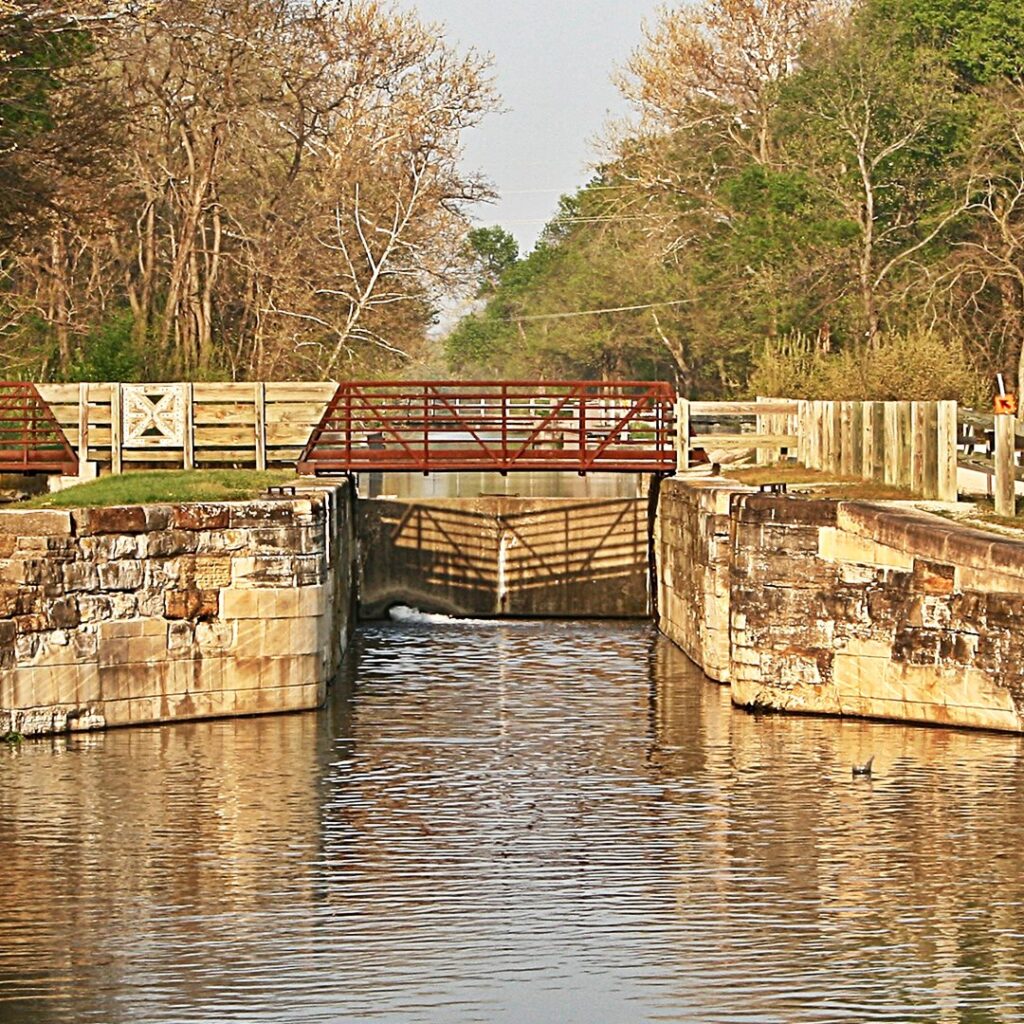A Corridor of History
Excerpts from article 2013 from Chicago to LaSalle
Selbert, Pamela. St. Louis Post – Dispatch (St. Louis, MO) 10 Mar 2013: H.1.
Barges no longer ply the waters of the old Illinois and Michigan Canal; they haven’t for nearly a century. So today, the venerable 96-mile ditch which stretches diagonally across Illinois from Lake Michigan at Chicago to the Illinois River at LaSalle is edged with this stands of cattails. Where the cattails don’t grow, the water is crusted lime green with duckweed though slanting rays of an early evening sun can lend it the appearance of shimmering mercury.
Now, a fine walking and biking trail has replaced a 61-mile span of the old towpath Rockdale to LaSalle where mules once slogged along pulling the canal boats. And the only sound, other than the rush of wind in the tall maples that shadow the water and the lusty chorus of insects, is the occasional lonely wall of a distant train whistle.
When the canal opened in 1848, it was a different story. The I&M known as the “canal that built Chicago” bustled with passenger traffic (during the canal’s first 10 years alone the city grew by more than 600 percent). And other towns along the route, among them Lockport, Joliet, Seneca, Marseilles, Ottawa and LaSalle, grew and flourished.
In 1852 the Chicago and Alton Railroad was completed and quickly stole most of the canal’s passengers. By rail you could travel from Chicago to LaSalle in six hours. By canal boat it took 24.
For the second half of the 19th century, then, the canal carried freight and eventually sewage and other waste out of Chicago (passengers could ride on the freight barges, but regular passenger service was no longer offered). For its last three decades until the Illinois Waterway opened in 1933 and the old I&M was decommissioned it was used only by pleasure boats and small steam barges. Mules last towed boats, the canal’s length in 1915, and today some stretches of it are as grassy as lawns.
The historic waterway, which was designated a National Heritage Corridor by Congress in 1984, is now owned by the state of Illinois and managed by the Canal Corridor Association, a 501 (c) 3 non-profit organization. Though not nearly as well known as the Erie Canal built just a few years earlier, the I&M shares a similar story.
Work on the canal, built to link New York and the Great Lakes with St. Louis and New Orleans on the Mississippi, began in 1836. French explorer Louis Joliet had suggested building the canal more than 150 years earlier, but it was only after the fur trade here had begun to flourish and settlers were arriving that the 12-year project got under way.
Immigrants from Ireland, Sweden, Germany, Poland and elsewhere some who had worked on the Erie Canal were brought to do the work, using picks and shovels, black powder, drills and chisels to dig the “ditch” and “feeder” canals (for water). They also built aqueducts, dams, the levee for the towpath, plus 15 locks (which raised and lowered the water a total of 141 feet), and houses for the lock tenders. Each of the 2,000 men working on the project was paid $1 and 4 ounces of whiskey per 16-hour day.
Still, you can turn back the clock to the 19th century briefly and ride on a mule-drawn replica canal boat called “Volunteer,” traveling as passengers did on this “Cadillac of a canal.” The two-mile round trips begin at LaSalle, near the former west end of the canal, the only stretch of it still maintained (by the Army Corps of Engineers).
The 16-foot wide, 75-foot long Volunteer, an exact reproduction of earlier packets, was built in 2007. The 60-minute cruises are offered May through October. Visit the I & M Canal website for more info on boat rides. – Selbert, Pamela
Learn more about the I&M Canal here.
